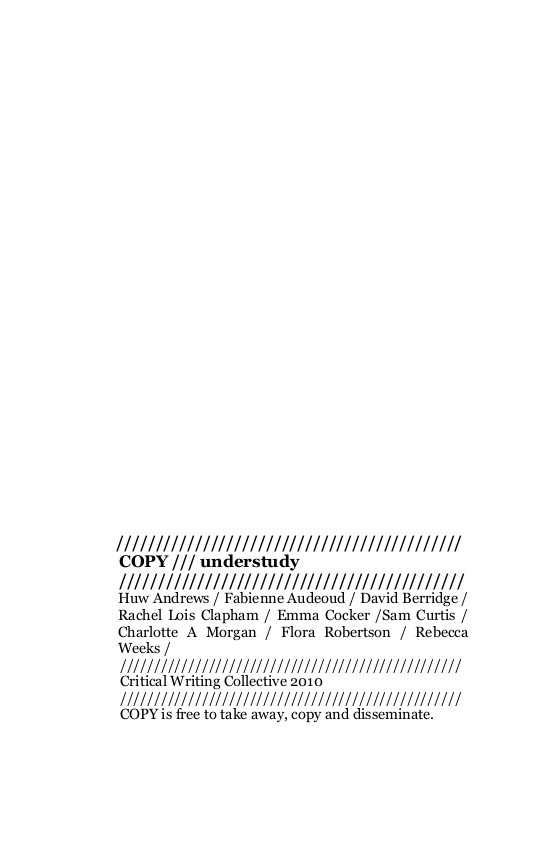Adalaide Kirby Morris (ed.): Sound States: Innovative Poetics and Acoustical Technologies (1997)
Filed under book | Tags: · acoustics, art, listening, literature, music, performance, radio, radio art, sound art, sound recording, technology

By investigating the relationship between acoustical technologies and twentieth-century experimental poetics, this collection, with an accompanying compact disc, aims to ‘turn up the volume’ on printed works and rethink the way we read, hear, and talk about literary texts composed after telephones, phonographs, radios, loudspeakers, microphones, and tape recorders became facts of everyday life.
The collection’s twelve essays focus on earplay in texts by James Joyce, Ezra Pound, H.D., Samuel Beckett, William Burroughs, Amiri Baraka, Bob Kaufman, Robert Duncan, and Kamau Brathwaite and in performances by John Cage, Caribbean DJ-poets, and Cecil Taylor. From the early twentieth-century soundscapes of Futurist and Dadaist ‘sonosphers’ to Henri Chopin’s electroacoustical audio-poämes, the authors argue, these states of sound make bold but wavering statements–statements held only partially in check by meaning. The accompanying CD offers soundtracks of early radio sounds, poetry readings, Dada cabaret performances, jazzoetry, audiopoems, and contemporary Caribbean DJ dub poetry.
The contributors are Loretta Collins, James A. Connor, Michael Davidson, N. Katherine Hayles, Nathaniel Mackey, Steve McCaffery, Alec McHoul, Toby Miller, Adalaide Morris, Fred Moten, Marjorie Perloff, Jed Rasula, and Garrett Stewart.
Publisher University of North Carolina Press, 1997
ISBN 0807846708, 9780807846704
349 pages
PDF (no OCR; updated on 2012-8-3)
Comment (0)COPY, 1: Understudy (2010)
Filed under magazine | Tags: · art, art criticism, contemporary art, performance, united kingdom

“COPY is a publication of critical/experimental writing as or in the field of visual art and performance.
This issue of COPY is launched as part of The Plaza Principle, curated by Derek Horton and Chris Bloor in the partially vacant 1980s Leeds Shopping Plaza; an exhibition that aims to acknowledge the economic context in which artists are invited to occupy vacant shop units to disguise or compensate for economic decline in the nations town, city and district centres, supplementing commercial inactivity with cultural activity.
COPY proposes understudy as a point from which to consider, reflects and interrupt this context through a collection of art writing around the stand in – the temporary, illusory, consumed or performed; smoke and mirrors; the assessed, inquired or theorized. The works in this issue address, allude to or form tangents from these ideas and present a range of approaches to the use of the page, print and the form and nature of writing as or within practice.”
Contributors include Huw Andrews, Fabienne Audeoud, David Berridge, Rachel Lois Clapham, Emma Cocker, Sam Curtis, Charlotte A Morgan, Flora Robertson and Rebecca Weeks.
Developed by Critical Writing Collective, a network and platform for art writing and critical dialogue based in the Yorkshire region, UK.
Free to take away, copy and disseminate
26 pages
PDF (added on 2017-12-2)
Scribd
Hannah Higgins: Fluxus Experience (2002)
Filed under book | Tags: · art, art criticism, art history, education, experimental film, fluxus, happening, intermedia, intermedia art, neo-dada, performance, performance art, pop art

“In this work, Hannah Higgins explores the influential art movement Fluxus. Daring, disparate, contentious—Fluxus artists worked with minimal and prosaic materials now familiar in post-World War II art. Higgins describes the experience of Fluxus for viewers, even experiences resembling sensory assaults, as affirming transactions between self and world.
Fluxus began in the 1950s with artists from around the world who favored no single style or medium but displayed an inclination to experiment. Two formats are unique to Fluxus: a type of performance art called the Event, and the Fluxkit multiple, a collection of everyday objects or inexpensive printed cards collected in a box that viewers explore privately. Higgins examines these two setups to bring to life the Fluxus experience, how it works, and how and why it’s important. She does so by moving out from the art itself in what she describes as a series of concentric circles: to the artists who create Fluxus, to the creative movements related to Fluxus (and critics’ and curators’ perceptions and reception of them), to the lessons of Fluxus art for pedagogy in general.
Although it was commonly associated with political and cultural activism in the 1960s, Fluxus struggled against being pigeonholed in these too-prescriptive and narrow terms. Higgins, the daughter of the Fluxus artists Alison Knowles and Dick Higgins, makes the most of her personal connection to the movement by sharing her firsthand experience, bringing an astounding immediacy to her writing and a palpable commitment to shedding light on what Fluxus is and why it matters.”
Publisher University of California Press, 2002
ISBN 0520228677, 9780520228672
259 pages
Reviews: Ken Friedman (Design Research, 2003), Jennie Klein (PAJ: A Journal of Performance and Art, 2004), Roy R. Behrens (Leonardo, 2004), Branislav Jakovljevic (TDR: The Drama Review, 2004), Ágnes Ivacs (Artpool, n.d.).
PDF (updated on 2012-7-18)
Comment (0)
